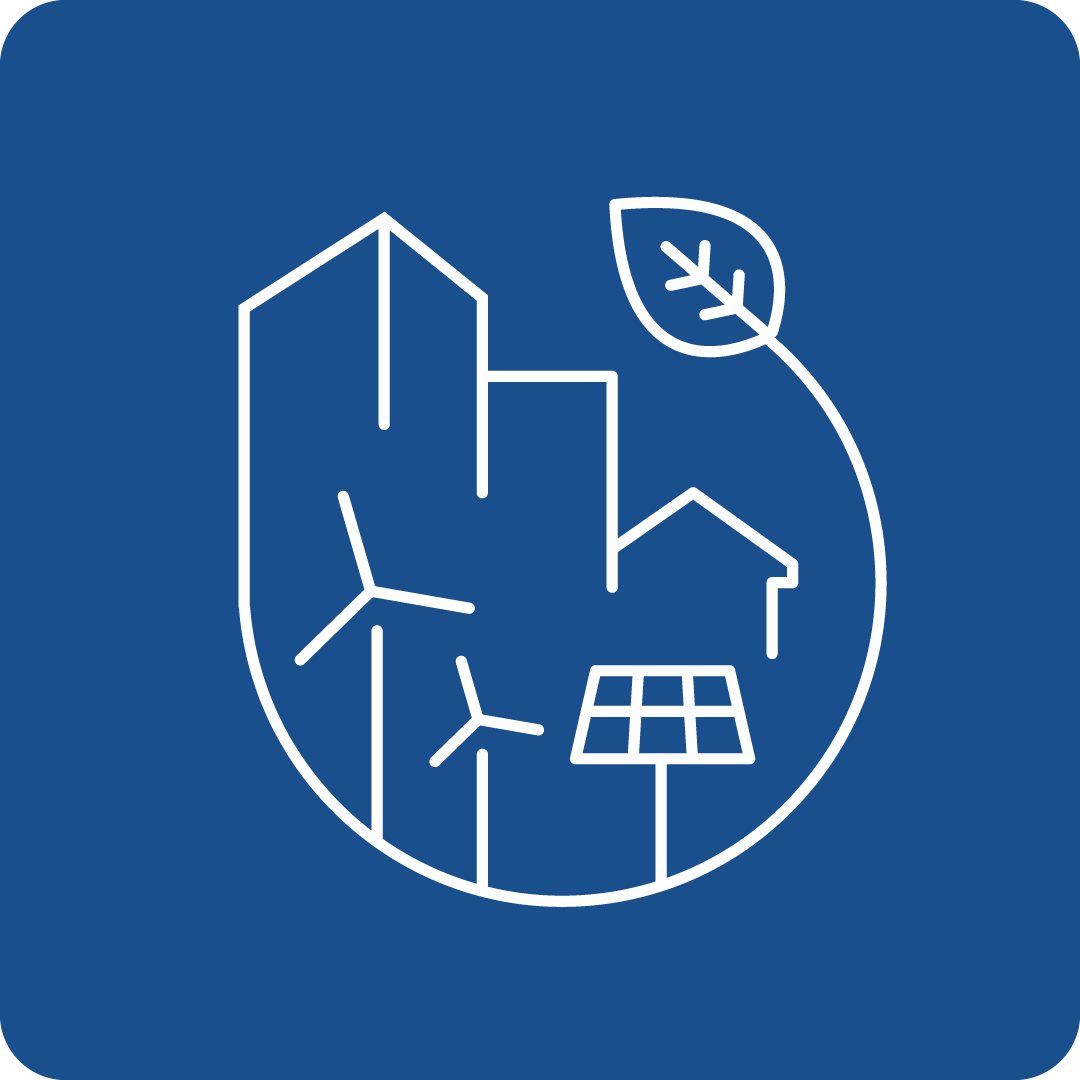Filter Search for grants
Call Navigation
Deadline expired
The deadline for this call has expired.
Call key data
Alleviating household energy poverty in Europe
Funding Program
LIFE - sub-programme “Clean Energy Transition”
Call number
LIFE-2024-CET-ENERPOV
deadlines
Opening
18.04.2024
Deadline
19.09.2024 17:00
Funding rate
95%
Call budget
€ 6,000,000.00
Estimated EU contribution per project
€ 1,750,000.00
Link to the call
Link to the submission
Call content
short description
Actions should contribute to actively alleviating energy poverty and build on the tools, indicators and resources of existing initiatives, such as the Energy Poverty Advisory Hub or the energy poverty pillar of Covenant of Mayors.
Call objectives
In recent years, European households have continued to spend an increasing share of income on energy, leading to higher rates of energy poverty and negatively affecting living conditions, well-being and health. Most recent estimates suggest that 9.3% of Europeans are unable to keep their homes adequately warm. Following the recent surges in energy prices, the number of energy poor households overburdened by their energy costs is likely to be on the rise. These higher prices, combined with low incomes and poor energy efficiency of buildings and appliances, are root causes of energy poverty. In addition to its causal multidimensionality, the phenomenon cuts across different policy sectors beyond energy, such as health, housing and social policy, requiring coordinated, holistic efforts at all governance levels, and involving different sectoral actors. While increasing the uptake of building renovation measures can bring significant long-term benefits to energy poor households, energy efficiency measures at the household level and increased use of renewable energy are also key tools in addressing energy poverty and can lead to lower energy bills and improved living conditions.
The European Green Deal sets out to ensure an energy transition that is socially just and inclusive. In accordance with the Fit for 55 package, and in particular the revision of the Energy Efficiency Directive (EED), Member States shall implement energy efficiency improvement measures as a priority among people affected by energy poverty, vulnerable customers, people in low-income households and, where applicable, people living in social housing. These households should be prioritised in the implementation of energy savings obligations, with the option of requiring obligated parties to achieve a share of their energy savings obligation among vulnerable customers and to work together with local authorities to do so. In addition, the EED (recast) underlines the need to address the split incentive dilemma and remove barriers to energy efficiency measures in multi-owner properties. To ensure more coordinated action on energy poverty, an EC Recommendation on Energy Poverty and accompanying Staff Working Document further set out a series of measures and policies that can be adopted.
In this context, efforts should focus on offering support to overcome barriers to the uptake of renovation measures in multi-apartment buildings requiring coordinated action amongst homeowners, as well as supporting relevant actors, including public authorities, in designing longer-term strategies and coordination frameworks to mitigate energy poverty at different governance levels, including dedicated financing schemes specifically addressing energy performance improvements for energy poor households. As obligated parties under energy efficiency obligation schemes have potentially at their disposal the necessary data and means to identify energy poverty and vulnerability among their customers, supporting the obligated parties is needed in order to spread such schemes across the EU.
read more
Expected effects and impacts
Proposals should present the concrete results which will be delivered by the activities, and demonstrate how these results will contribute to the topic-specific impacts. This demonstration should include a detailed analysis of the starting point and a set of well-substantiated assumptions, and establish clear causality links between the results and the expected impacts.
Proposals submitted under this topic should demonstrate how they will contribute to the reduction of energy poverty for the targeted households and the development of successful approaches for improvements in the energy efficiency and use of renewable energy solutions, which can be replicated in other regions or Member States. Prebound/rebound effects should be taken into account and reported on, where relevant.
Proposals should quantify their results and impacts using the indicators provided for the topic, when they are relevant for the proposed activities. They should also propose indicators which are specific to the proposed activities. Proposals are not expected to address all the listed impacts and indicators. The results and impacts should be quantified for the end of the project and for 5 years after the end of the project. Impacts under this topic are expected to be demonstrated for energy poor households specifically.
The indicators for this topic include:
- Number of energy poor households with reduced energy costs.
- Number of multi-apartment buildings renovated.
- Number of governance and decision-making structures adapted for multi-apartment buildings.
- Number of energy poverty observatories, coordination structures or support and capacity-building programmes established.
- Quantified multiple benefits, where relevant, for energy poor households, such as improved physical and mental health, comfort and indoor environment, better indoor air quality, improved social inclusion, reduced public health expenditure.
- Number of energy poor consumers benefitting from the measures.
- Number of legislative or implementing acts, policies or strategies created/adapted on energy poverty.
- Other environmental impacts such as reduction of the production of harmful substances, or reduced CO2 emissions.
Proposals should also quantify their impacts related to the following common indicators for the LIFE Clean Energy Transition subprogramme:
- Primary energy savings triggered by the project in GWh/year.
- Final energy savings triggered by the project in GWh/year.
- Renewable energy generation triggered by the project (in GWh/year).
- Reduction of greenhouse gases emissions (in tCO2-eq/year).
- Investments in sustainable energy (energy efficiency and renewable energy) triggered by the project (cumulative, in million Euro).
read more
Expected results
The proposed action should cover maximum two of the following bullet points:
- Support the renovation of private multi-apartment buildings with energy poor residents, with a special focus on reinforcing and adapting the governance and decision-making structures of building management and homeowners or tenants associations, tackling related regulatory framework barriers (e.g. property and/or rental laws), split incentives (where relevant), and setting up and coordinating relevant support services. The renovation actions supported should take into account the ability of residents to remain in their homes to avoid gentrification.
- Support national authorities in their obligation to empower and protect energy poor households by implementing the relevant provisions of the EED (recast). This support should help analyse the national policy mix, and combine and pull the different energy poverty-related provisions together to allow for the effective and coherent application of measures at the national level. In doing so, the action should also support relevant authorities to evaluate the impact of different implementation options, taking into account the specific national needs and context on energy poverty.
- Actions should facilitate the delivery of capacity-building for national, regional and/or local authorities and societal intermediaries, and support these actors in setting up long-term, cross-sectoral coordination structures to tackle energy poverty. Such structures could include setting up national energy poverty observatories. The actors involved are expected to represent all relevant sectors (e.g. energy, social, health, and housing) to ensure a holistic participatory approach to the alleviation of energy poverty in the long term and to improve social cohesion. This capacity-building should ultimately lead to the relevant actors co-designing and rolling out integrated interventions and support schemes for the benefit of energy poor households; however, it is not expected that such interventions or support schemes are delivered as part of the action.
- Support obligated parties in setting up and testing schemes for energy efficiency improvement measures for the benefit of people affected by energy poverty, vulnerable customers, people in low-income households and, where applicable, people living in social housing under the energy efficiency obligation schemes of the EED (recast), including, where applicable, working together with local authorities or municipalities, and/or relevant networks such as the Covenant of Mayors. It is expected that obligated parties, in particular, are either directly involved or their support is clearly demonstrated in the proposal.
The proposed actions should take into account multiple benefits from the Energy Efficiency and Renewable Energy measures for the different energy poor target groups, such as improved health, comfort, air quality, better social inclusion etc. Specific attention could be paid to particular groups which are more at risk of being affected by energy poverty or more susceptible to the adverse impacts of energy poverty, taking into account gender, where relevant.
The proposed actions should involve local authorities and intermediaries such as consumer or social organisations, energy companies, healthcare providers, homeowners or tenants associations, energy communities, as relevant.
Proposals should justify the need for the development of any tools, databases or platforms, considering their added value compared to existing ones. If included, applicants should carefully consider how to make them available to facilitate their reuse by other initiatives.
Addressing more than one bullet point does not necessarily increase the relevance of the proposal.
read more
Eligibility Criteria
Regions / countries for funding
Moldova (Moldova), Iceland (Ísland), North Macedonia (Северна Македонија), Ukraine (Україна)
eligible entities
Education and training institution, International organization, Non-Profit Organisation (NPO) / Non-Governmental Organisation (NGO), Other, Private institution, incl. private company (private for profit), Public Body (national, regional and local; incl. EGTCs), Research Institution incl. University, Small and medium-sized enterprise (SME)
Mandatory partnership
Yes
Project Partnership
Proposals must be submitted by at least 3 applicants (beneficiaries; not affiliated entities) from 3 different eligible countries.
In order to be eligible, the applicants (beneficiaries and affiliated entities) must:
- be legal entities (public or private bodies)
- be established in one of the eligible countries, i.e.:
- EU Member States (including overseas countries and territories (OCTs))
- non-EU countries:
- listed EEA countries and countries associated to the LIFE Programme (associated countries) or countries which are in ongoing negotiations for an association agreement and where the agreement enters into force before grant signature (list of participating countries)
- the coordinator must be established in an eligible country
Entities from other countries (not listed above) are exceptionally eligible, if the granting authority considers their participation essential for the implementation of the action (see work programme).
Natural persons are NOT eligible (with the exception of self-employed persons, i.e. sole traders, where the company does not have legal personality separate from that of the natural person).
International organisations are eligible. The rules on eligible countries do not apply to them.
EU bodies (with the exception of the European Commission Joint Research Centre) can NOT be part of the consortium.
Entities which do not have legal personality under their national law may exceptionally participate, provided that their representatives have the capacity to undertake legal obligations on their behalf, and offer guarantees for the protection of the EU financial interests equivalent to that offered by legal persons.
other eligibility criteria
Financial support to third parties is not allowed under Call LIFE-2024-CET except for topic LIFE-2024-CET-SAP.
Additional information
Topics
Relevance for EU Macro-Region
EUSAIR - EU Strategy for the Adriatic and Ionian Region, EUSALP - EU Strategy for the Alpine Space, EUSBSR - EU Strategy for the Baltic Sea Region, EUSDR - EU Strategy for the Danube Region
UN Sustainable Development Goals (UN-SDGs)
![]()
![]()
![]()
![]()
Additional Information
Proposals must be submitted electronically via the Funding & Tenders Portal Electronic Submission System (accessible via the Topic page in the Search Funding & Tenders section. Paper submissions are NOT possible.
Proposals must be complete and contain all the requested information and all required annexes and supporting documents:
- Application Form Part A — contains administrative information about the participants (future coordinator, beneficiaries and affiliated entities) and the summarised budget for the project (to be filled in directly online)
- Application Form Part B — contains the technical description of the project (to be downloaded from the Portal Submission System, completed and then assembled and re-uploaded)
- Part C (to be filled in directly online) — contains additional project data and the project’s contribution to EU programme key performance indicators
- mandatory annexes and supporting documents (templates available to be downloaded from the Portal Submission System, completed, assembled and re-uploaded):
- detailed budget table (mandatory Excel template available in the Submission System)
- participant information including previous projects, if any (mandatory template available in the Submission System)
- for topic LIFE-2024-CET-PDA: table of investments (mandatory template available in the Submission System)
- optional annexes: letters of support
Proposals are limited to maximum 65 pages (Part B).
Call documents
LIFE-2024-CETLIFE-2024-CET(1462kB)
Contact
To see more information about this call, you can register for free here
or log in with an existing account.
Log in
Register now



